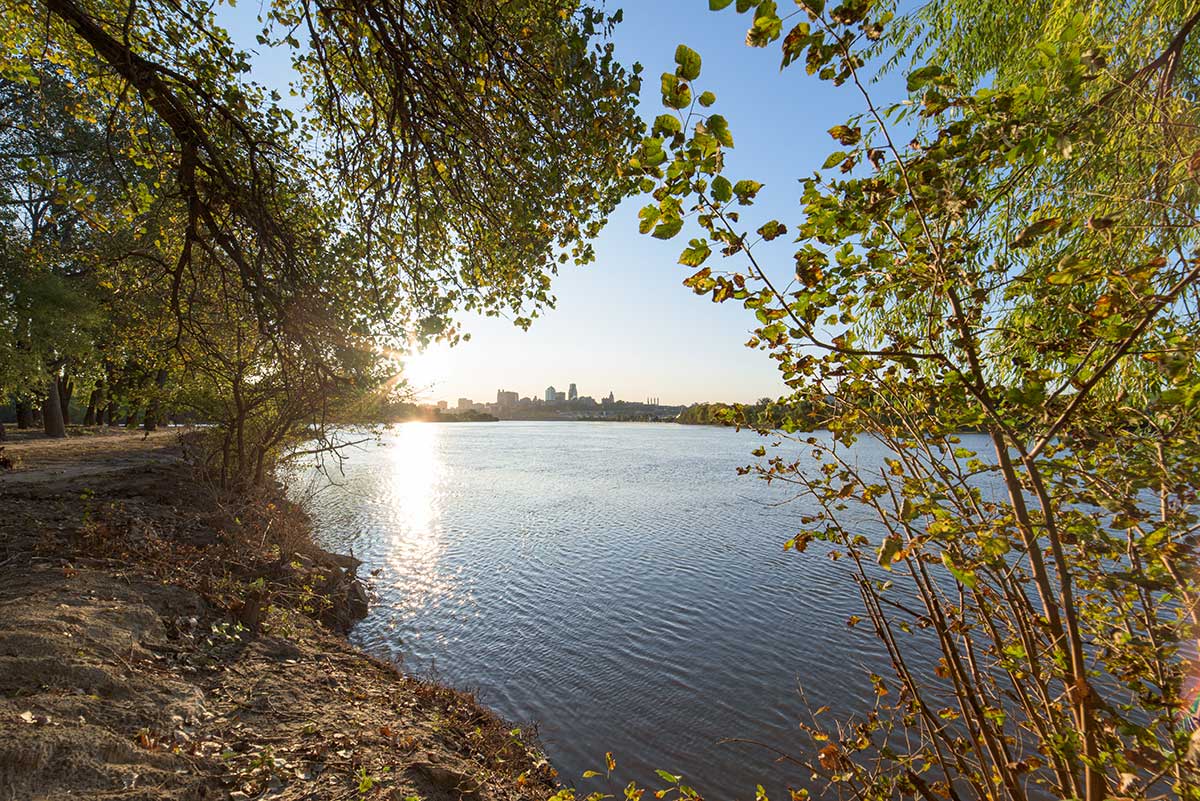Some Missouri students are enjoying hands-on lessons in sustainability through a program called Missouri Green Schools. Children are excited to learn about composting, recycling, gardening, and other activities that have healthy benefits.

By Nate Birt
Rotten apples, pizza crusts, rejected green beans—the students at Sunrise School in Desoto routinely bring these unappetizing scraps of food to school, and their teachers are delighted! The students bring food waste from home to support the school’s worm-based composting program, known as vermicomposting.
Then there are the pigs. Sunrise School has also created a program called “Feed the Pigs,” that collects cafeteria food waste to feed a handful of pigs named by the students. Families can bid on the pigs at an auction at the end of the year.
Programs like these, along with school gardens and recycling programs, are just some of the initiatives giving Missouri students an up-close look at sustainability in action. They’re also inspiring communities to take care of the environment and their health. The enthusiastic response from students, teachers, and parents is exciting to the organizers of a growing program called Missouri Green Schools.

“Parents often report that their kids talk nonstop about the sustainability initiatives they get to be a part of at their school, or the produce they grew in the school garden that their parents must also try,” says Lesli Moylan. Lesli is executive director of the Missouri Environmental Education Association (MEEA) and comanages the schools program with the Missouri Gateway Green Building Council. “This attests to the engaging and effective hands-on, real-world learning that is part of being a green school.”
Green schools aren’t just about gardening, or just about improving energy efficiency or air quality. They’re also about contributing to the well-being of families and communities.
“Twenty-five percent of Americans attend school each day as students, faculty, and staff. That’s 1.5 million Missourians,” says Hope Gribble, Green Schools manager for the Green Building Council. “Unfortunately, many school buildings are in disrepair—barely meeting code, inefficiently consuming resources, filled with materials that make the air unfit to breathe. This results in sick, tired, and unproductive students and staff. Green schools are healthy, high-performing places that yield better learning for students, more effective teachers, fiscal responsibility, and resource conservation.”
Organizers launched Missouri Green Schools in fall 2020 as a free, statewide recognition program four levels of achievement. They go from emerging (making a commitment and taking the first steps toward a green and healthy school) to advanced (achieving whole-school sustainability).
Through a partnership with the Missouri Department of Elementary and Secondary Education, the program serves as a conduit for the prestigious US Department of Education Green Ribbon Schools award. In 2022, honorees recognized as Green Ribbon Schools included the School District of University City. The district is expanding green programming to boost student wellness. Principia School of Town and Country, also a winner, engaged students in 94 projects over a two-year period. There, young people present their research to a panel of experts. To date, a small team, including AmeriCorps VISTA volunteers, has grown the program. This year, Missouri Green Schools seeks to raise enough money to keep the program going through the end of 2023 and beyond.
“Our goal is for every Missouri student to attend a green school,” Gribble says. “As we wrap up our final pilot year, we are excited to have just over 20 schools enrolled. We hope to triple that number in the next three years, and we are especially interested in engaging schools in rural areas across the state.”
To see all the Green Ribbon honorees and to study up on the Missouri Green Schools program, go to MissouriGreenSchools.org.
Article originally published in the March/April 2023 issue of Missouri Life.
Related Posts
High School Basketball Superstar
On February 15, 1977, Kevin Williams of Nevada blocked 20 of Mt. Vernon’s shots in a high school basketball game.
Missouri students compete in National History Day contests
Judging for the National History Day contest in Missouri is underway statewide as just under 500 students in grades 6 to 12 compete in this year’s virtual contest, which is themed Debate and Diplomacy in History.
Missouri River Relief launches school initiative
Missouri River Relief is debuting its new “Missouri River Scientists” traveling trunk education program, partnering with Columbia Public Schools to launch the initiative.
Teachers at Columbia Public Schools will have the first opportunity to bring “Missouri River Scientists” into their classrooms as a fun new way to explore the recovery and management of the endangered Pallid Sturgeon.



